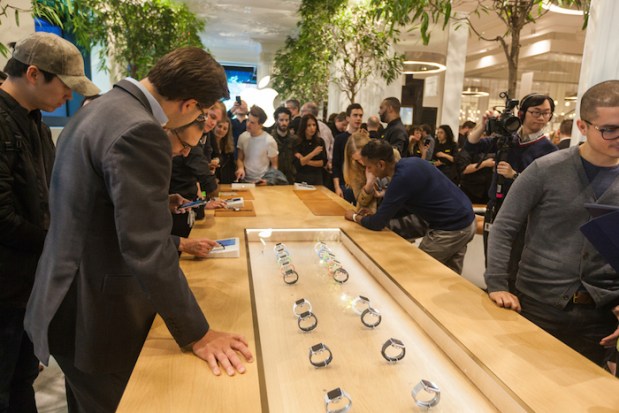Some Pull Ahead, Others Fall Behind 2016’s Strongest Retail Trends

Several years ago, traditional retailers that failed to act in response to disruptions in their industries have either financially disintegrated or are well on their way to that end now. Over the last few years, though, every retail executive worth his or her salt has realized that real danger doesn’t lie in inactivity anymore.
No, now the difficulty lies in determining which prevailing trends are going to push them and the market forward – and which lead to nothing but dead ends and awkward earnings calls.
Synchrony Financial’s new “Top 10 Retail Trends for 2016” took a stab at sussing out the potentially poignant shifts in both consumer and retailer behavior that could lead to sustained paydirt down the road, and while the vehicles of change may come from a cast of usual suspects early adopter retailers should be familiar with, it’s clear that brands’ abilities to predict and react to them varies wildly.
For example, Synchrony tagged wearable technology as the trend most likely to dominate the retail conversation as the year goes on — as many as 8 in 10 shoppers with wearable devices are looking for more integrated experiences when they visit brick-and-mortar storefronts — and there are more than a handful of startups and industry standbys making good on consumers’ calls for a more fluent incorporation of their devices. CoWatch, one of the few non-Apple smartwatch developers out there, is well underway with a Indigogo campaign to raise funding for a wearable that incorporates Amazon Alexa support into the wrist-worn device. It’ll be a long road to the market, but customers seem willing to wait for a product that can bridge one of the most successful voice-activated products of the last few years into the rest of their lives.
Speaking of voice-activated products, Synchrony pointed to them as the third-most important retail trend that brands should have on their radars in 2016. Whether it’s stretching the limits of the Amazon Alexa ecosystem or working to build out proprietary voice-enabled search functions, Synchrony believes the oral tech wave is soon to break on retail’s shores. There’s even rumblings about a resurgence of voice-activated AI assistants that capitalize on ground broken by products like Apple’s Siri – Viv, a hybrid chatbot-AI built by Siri’s co-founders, thinks it can do for smartphone-based concierge what the Alexa did for electronic assistants in the home, including completing complex online orders with users’ voices and without opening any apps.
2016 in retail doesn’t look to be dominated exclusively by emerging tech, though. Synchrony noted that created retail holidays — like Alibaba’s Singles’ Day or Amazon’s Prime Day — will continue to offer revenue opportunities for those merchants bold enough to chase them. The report also cited slow-but-steady growth in transactions conducted with mobile payments platforms, which should encourage merchants to get ahead of the trend so they’re not stuck with minutes-long EMV transactions after customers have stopped giving them the benefit of the doubt.
As usual, the Internet of Things, personalized consumer engagement, and a focus on video content remained pillars of the shifting retail sands, though Synchrony also suggested that brands keep an eye out for a surge in non-discretionary pet spending. A combination of increased consumer spend across the board and a growing millennial population more willing to splurge on their cats and dogs rather than themselves should make that a particularly torrid revenue stream going forward.
What might give most retailers fits in 2016, though, is the continued advance of virtual reality into the online and in-store shopping process. Hailed by supporters as a potential bridge between the physical and digital retail worlds, VR has been something of a mixed-bag for merchants so far with awkward, bare-bones implementations and gimmicky rollouts galore. Even VR device manufacturers like Oculus are struggling with the tech’s first moments in the harsh daylight of market exposure; the Facebook-backed company is apparently so eager to get its Rift headset into consumers hands that it’s passing over thousands of names on pre-order lists to get the devices into B&M storefronts as demo models for the general public.
It’s got more than a few former Oculus fans riled up, and the experience should be familiar to more than a handful of retailers out there. As the trends of 2016 force brands to make difficult choices, some will lean in the wrong direction and some, eventually, will lose their footing to find it was the only thing keeping them upright at all.
